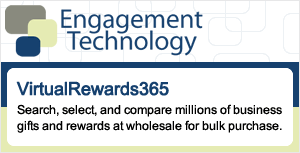Engagement Technology: Avoiding Buyer’s Remorse
These days we have more data and insight to do our jobs well, but in many cases all this technology and robust software is implemented hastily to fill an immediate need and without considering all the necessary requirements
By Richard Blabolil, President, Marketing Innovators
All around the world, millions of us start our business day by firing up the computer. We may check out a few social channels, skim the headlines of the latest industry news and then log on to one or more business platforms designed to help us to do our jobs. We access multiple tools and devices daily. We often have several tabs open and jump from activity to activity. Next to our computer (or in near proximity) is our mobile phone to ensure we stay connected to family and, for some, clients and colleagues.
We are arguably more productive, as we have more data and insight to do our jobs well. Unfortunately, all this technology and robust software is often implemented hastily to fill an immediate need and without a complete view into all the requirements. In the end, it may not be fully applied; there is a lack of training, and parts of the tool may not fully meet all the business needs. This can lead to additional software or services being purchased or built to solve what the first implementation failed to do, even though each provides similar services. This can easily leave your workforce with disparate technologies that can actually get in the way of delivering business value.
5 Questions to Ask
Unless it’s carefully selected, technology that’s designed to help engage, reward and recognize employees can lead to the same pitfalls described above. When considering or re-evaluating employee engagement technology, ask these five questions to avoid technology “buyer’s remorse.”
1. Can it be customized, and what support does the company provide? Look for companies that immerse themselves in your business and provide a dedicated team to facilitate the implementation and training. They should have experience working with corporate IT departments and know how to adjust as needed. They should be focused first on understanding unique requirements as well as challenges to help customize your employee engagement platform. A focused, experienced team dedicated to your specific needs is as important as the software itself. Don’t overlook the people side of your solution choice.
2. Does it facilitate community through social integration? You’re probably tired of hearing that social integration is important and building a community engages employees. But when you and your team are evaluating various tools, take the time to understand the opportunities and limitations. Social integration can either help your program soar or fall considerably short of expectations. Look for options ranging from internal, secure custom community portals to integration with one or more of the large social channels like Facebook.
3. Does it offer personalized employee recognition? Beyond adding a name to an award, does the program offer unique and personal opportunities, experiences and selections that truly inspire and excite your team? Consider who, what, where and how recognition and rewards can be delivered via the tool. Providing flexibility shows that you understand how each employee is unique.
4. Is there a mobile component? Mobile is a hot topic right now that won’t be going away any time soon. Your employees are using mobile, so it’s important to have options and engage them where they’re spending a considerable amount of time. Mobile is one of the most critical elements to ensure your workforce participates in the program. By bringing your initiative to multiple devices, you’re offering the flexibility your employees have come to expect.
5. How does the tool report out on data? Be sure reporting isn’t an afterthought. Data is important, but if it isn’t presented in a meaningful way or doesn’t help cut through the excess to the important key performance indicators, it’s basically worthless. More data isn’t necessarily better unless it’s useful. Ask to see reports. Inquire about customization to meet specific requirements. Data capture options and reports are important elements of an employee engagement program, providing the information needed to optimize, determine ROI and understand employee impact. Don’t assume if reporting is provided that it will meet your needs. Be sure to ask, and view your options.
Take the Time
Ask, dig, review, and then ask some more. When purchasing employee engagement technology, make sure you really take the time to select a product that will continue to meet your needs in the future. This technology is an investment in your employees and your company, and you can’t put a price on employee engagement. Start here by asking the questions that will prevent buyer’s remorse.
Rick Blabolil holds a Certified Professional of Incentive Management (CPIM) designation from the Incentive Marketing Association. He has spent more than 30 years in the motivation industry, including stints as President of the Incentive Marketing Association, President/Founder of the Forum for People Performance Management & Measurement, and VP of the Incentive Research Foundation. Find out more about technology and engagement at: www.marketinginnovators.com/employee-engagement/considering-employee-engagement-technology-5-must-ask-questions/
Subscription Center
Subscribe to Engagement Strategies Magazine
Update Your Subscriptions








Comments
Show: Newest | Oldest
Post a Comment